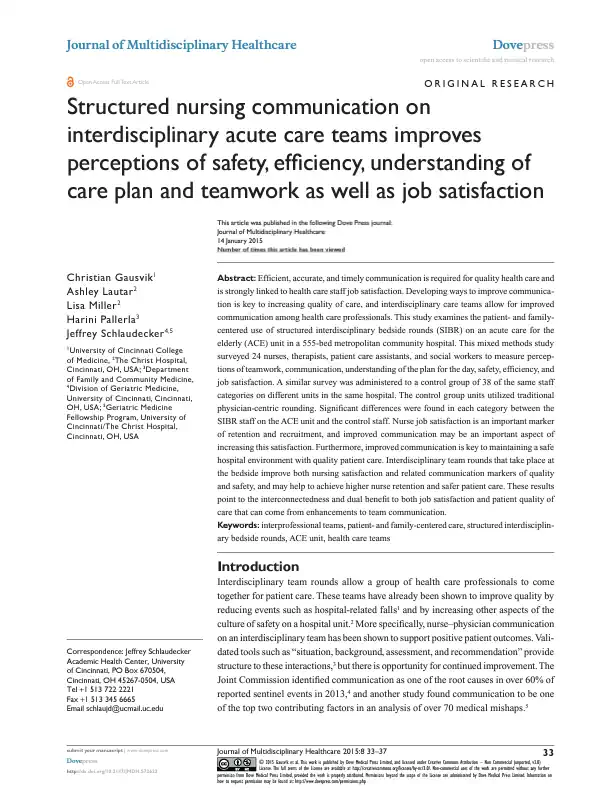
Structured nursing communication on interdisciplinary acute care teams improves perceptions of safety, efficiency, understanding of care plan and teamwork as well as job satisfaction.

Top Results
Overview
In a study conducted at The Christ Hospital, a 555-bed metropolitan community hospital with Magnet recognition for excellence in nursing, SIBR rounds were introduced to enhance nursing communication on an Acute Care for the Elderly (ACE) unit.
Objectives
To evaluate the impact of daily Structured Interdisciplinary Bedside Rounds (SIBR) on an Aged Care for the Elderly (ACE) Unit, focusing on:
perceptions of safety,
efficiency,
understanding of care plans,
teamwork, and
job satisfaction among healthcare staff.
Methods
The study surveyed nurses, social workers, physical and occupational therapists and Patient Care Assistants (PCAs). A separate survey was developed for these same staff groups on four non-intensive care hospital units, i.e. medical/surgery and telemetry units as a control. The surveys were designed to elicit insights on the different rounding styles between the ACE unit with SIBR rounds and the control units with traditional physician-centric rounds. Quantitative results were compiled for each of the four surveys.
Results
The introduction of SIBR led to significant improvements across several dimensions:
Improved Teamwork and Communication: Staff on the ACE unit reported enhanced teamwork and communication, with more structured and effective exchanges of information during rounds.
Increased Efficiency and Safety: The structured nature of SIBR streamlined the rounding process, reducing the time spent on rounds while simultaneously enhancing perceptions of patient safety among the staff.
Enhanced Understanding of Care Plans: With SIBR, all team members reported a better understanding of daily care plans, leading to more coordinated care efforts.
Boosted Job Satisfaction: The collaborative environment fostered by SIBR significantly increased job satisfaction among nurses and other healthcare professionals, contributing to a more positive work atmosphere.
Elevated Care Quality: The consistent inclusion of patient and family perspectives during rounds helped tailor care plans more closely to patient needs, thereby improving the overall quality of care.
Conclusion
The implementation of SIBR rounds on the ACE unit at the community hospital not only enhanced nursing communication and teamwork but also led to higher job satisfaction and improved patient care quality. These changes illustrate how structured communication protocols can transform care delivery in hospital settings, making them more efficient, safer, and more responsive to the needs of patients and their families.




